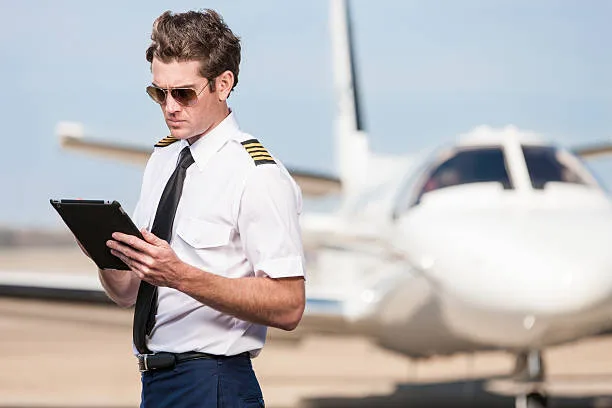
Pilots, whether they’re just starting out or are seasoned professionals, benefit from a diverse range of flying experiences. Each type of flight scenario offers unique challenges and learning opportunities, enhancing a pilot’s skills and knowledge.
This blog post explores nine essential flying experiences that every pilot should have. These experiences not only enhance a pilot’s technical skills but also build resilience, adaptability, and a deeper appreciation for the complexities of aviation. From the quiet glides of sailplane flying to the adrenaline-pumping maneuvers of aerobatic flights, each experience contributes to a pilot’s overall proficiency and confidence.
Unique Flying Experiences for pilots to Broaden Horizons
1. Mountain Flying:
Flying in mountainous regions involves navigating complex terrains and rapidly changing weather conditions. It requires a keen understanding of the environment and precise control of the aircraft.
Skills Gained: Pilots gain terrain awareness, advanced navigation skills, and experience in handling sudden weather changes. This experience also improves decision-making under challenging conditions.
Safety Considerations: Pilots must understand wind patterns, turbulence, and the dangers of mountain waves. Proper pre-flight planning and respecting altitude limitations are crucial.
2. Night Flying:
Night flying requires operating an aircraft in low-light conditions, relying heavily on cockpit instruments and understanding the nuances of nighttime navigation.
Skills Gained: This experience enhances instrument flight proficiency and teaches pilots to adapt to different lighting conditions. It also sharpens skills in using airport lighting systems and night vision adaptation.
Safety Considerations: Proper pre-flight planning, understanding visual illusions, and avoiding spatial disorientation are critical for safe night flying. Pilots must be prepared for reduced visual references.
3. Cross-Country Flights:
Cross-country flights cover long distances and require navigating across multiple airspaces and regions. This experience is fundamental for pilots seeking to expand their navigational skills.
Skills Gained: Pilots develop advanced flight planning abilities, fuel management skills, and experience in navigating through various air traffic control (ATC) zones. They also learn to adapt to different airspaces and regulations.
Safety Considerations: Effective weather forecasting, alternate airport planning, and clear communication with ATC are essential for a successful cross-country flight. Pilots must be prepared for changing weather and air traffic conditions.
4. Seaplane Flying:
Operating a seaplane involves taking off and landing on water surfaces, requiring unique skills and knowledge of water dynamics.
Skills Gained: Pilots learn to handle float-equipped aircraft and perform water takeoffs and landings. This experience also provides an understanding of water surface conditions and the effects of currents and wind.
Safety Considerations: Pilots must be aware of water conditions, potential hazards like debris, and the impact of wind on water operations. They should also be familiar with emergency procedures specific to water landings.
5. Instrument Flight Rules (IFR) Operations:
IFR operations involve flying solely based on instruments, crucial for navigating in low visibility conditions or during adverse weather.
Skills Gained: This experience develops proficiency in instrument navigation and reliance on ATC for navigation assistance. Pilots also learn to manage diverse weather conditions using instruments.
Safety Considerations: Thorough instrument proficiency and adherence to ATC instructions are vital for IFR operations. Pilots must also be skilled in IFR flight planning and handling emergencies without visual references.
6. Aerobatic Flying:
Aerobatic flying includes performing advanced maneuvers such as loops, rolls, and spins, which require precise control and a deep understanding of aerodynamics.
Skills Gained: Pilots enhance their aircraft control, learn about the limits of their aircraft, and gain increased situational awareness. This experience also builds confidence in handling the aircraft under stress.
Safety Considerations: Proper training and certification are essential for aerobatic flying. Pilots must understand aircraft limitations and follow safety protocols to prevent accidents during high-stress maneuvers.
7. Glider/Sailplane Flying:
Glider or sailplane flying involves piloting aircraft without an engine, relying on natural air currents and thermals for flight.
Skills Gained: Pilots develop a mastery of energy management, understanding thermals and ridge lifts, and precise control of the aircraft. This experience emphasizes the importance of situational awareness and resourcefulness.
Safety Considerations: Pilots must have thorough pre-flight planning, knowledge of weather conditions, and readiness for emergency landing procedures. Understanding the limitations and capabilities of non-powered flight is crucial.
8. International Flying:
International flying involves crossing borders and navigating different airspaces, requiring knowledge of global flight regulations and air traffic control procedures.
Skills Gained: Pilots gain experience in international flight regulations, communication in different languages, and navigation techniques that vary by country. This experience broadens a pilot’s understanding of global aviation operations.
Safety Considerations: Familiarity with visa and customs requirements, geopolitical issues, and cultural sensitivity is important. Pilots must also stay informed about international aviation regulations and practices.
9. Flying in Extreme Weather Conditions:
Pilots often encounter extreme weather conditions, such as thunderstorms, icing, or high winds, which test their skills and decision-making.
Skills Gained: Experience in extreme weather enhances a pilot’s ability to analyze weather patterns, make informed decisions, and handle the aircraft in challenging conditions.
Safety Considerations: Thorough weather briefings and an understanding of the aircraft’s de-icing systems are essential. Pilots must be skilled in identifying and avoiding severe weather to ensure safety.
Conclusion
These 9 flying experiences for pilots offer valuable learning opportunities at all levels. Each experience enhances different skills and prepares pilots for a wide range of scenarios. By seeking out these diverse experiences, pilots can improve their capabilities and confidence, ensuring they are well-prepared for the challenges of the aviation industry. Continuous learning and embracing new flying experiences are vital for any pilot’s professional growth and safety.

